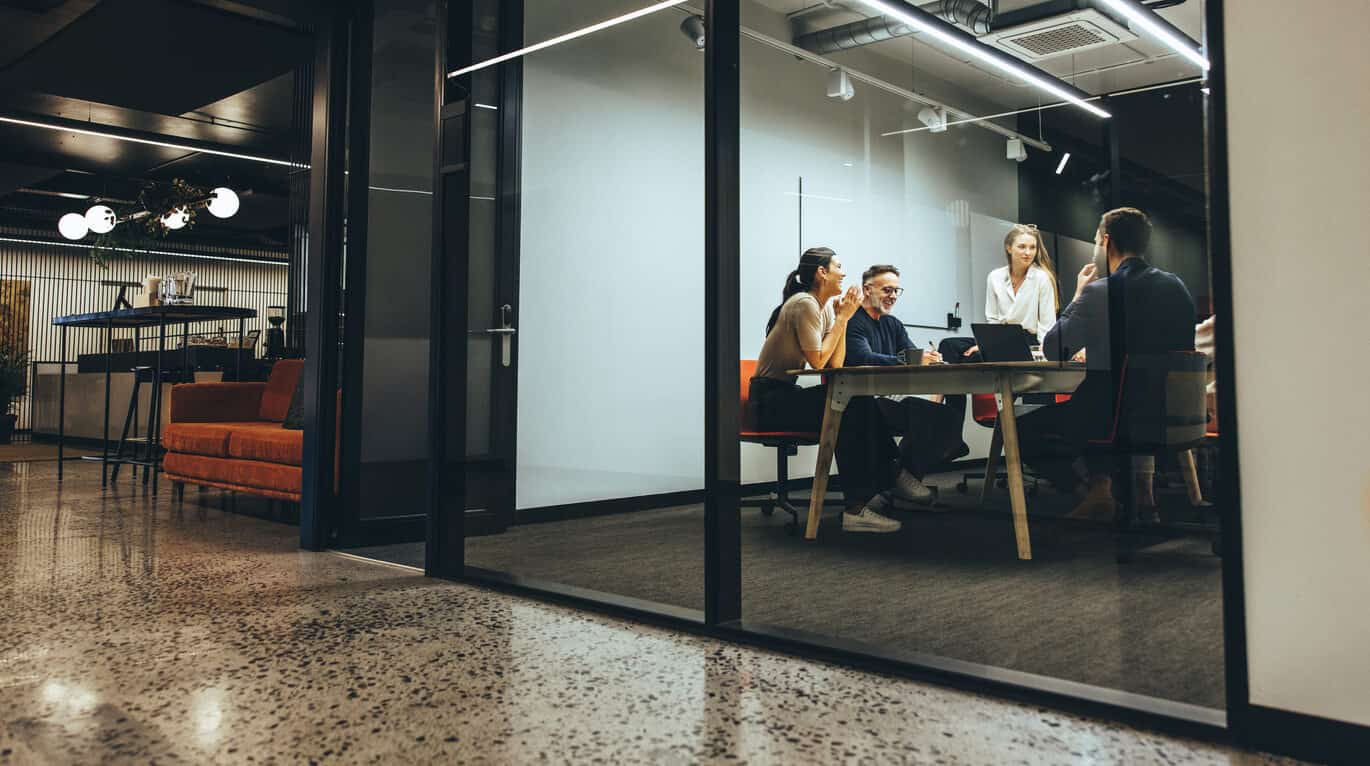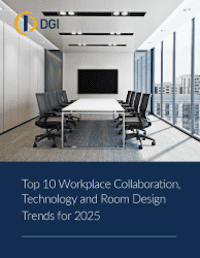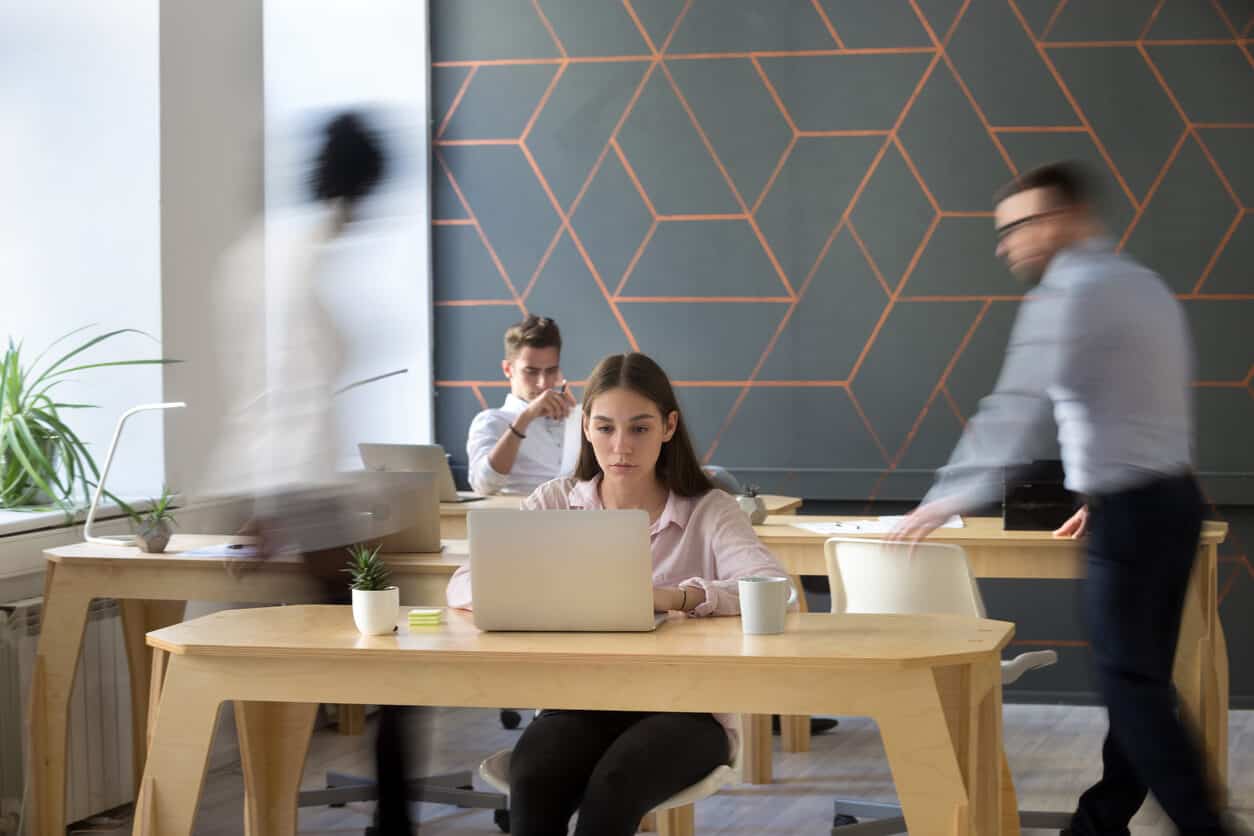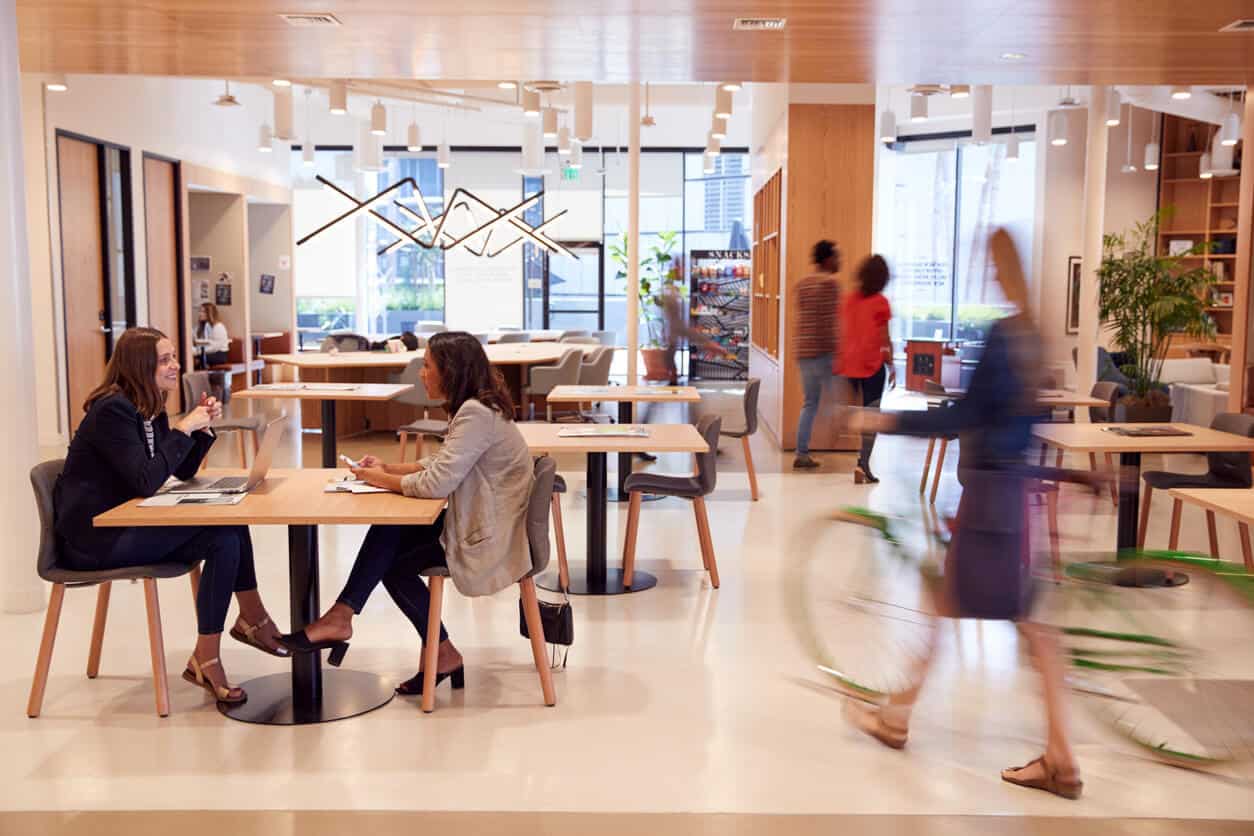When thinking about flexibility in the workplace, one of the first things that comes to mind is a hybrid work environment, one where employees have the freedom to split their hours between working from home and in the office, as they see fit. But flexibility goes beyond that — it can also help strictly in-office teams thrive.
A flexible, in-person work environment is designed to offer staff members a wide range of workspaces. In these types of offices, employees can choose the areas that will best help them complete their work, unlike typical offices with assigned seating. Arrangements like this aren’t only advantageous to individual employees, they also have benefits for teams and even entire organizations — including the ability to scale digitally innovative workspaces.
Let’s take a closer look at what these benefits are and why you should consider adding flexible workspaces to your office.
Benefits of Flexible Workspaces
Flexible workspaces can have a positive impact on both your employees and your company’s bottom line in the following ways:
Increased Employee Satisfaction
Providing your staff with the freedom to change their surroundings can help improve motivation, productivity and overall morale. When workers are happy, the chances of experiencing workplace stress — which can lead to absenteeism, burnout and reduced productivity — is reduced.
Improved Savings
A flexible workspace can significantly decrease your business’ overhead costs. That’s because many flex spaces offer non-traditional lease terms or pay-as-you-go payment structures. Without being tied to a building that may or may not have empty space, companies are also better equipped to adapt to the changing real estate landscape.
Employee Retention
With the help of modern technology, remote employees can more easily collaborate with in-office colleagues. However, studies show that a flexible, hybrid work environment is a top priority for today’s job seekers. That means that in order to find and keep top talent, employers should provide well-thought-out, flexible workspaces.
Examples of Flexible Workspace Design
An open and versatile workplace layout promotes familiarity among staff members and encourages collaboration in all forms. When creating flexible working areas, there are many different types to consider, including:
Activity-based Layouts
In an activity-based layout, office spaces are set up to feature different areas that are best suited for certain working styles. Employees are then free to decide where and how they want to work, and can choose from big, open team-sharing rooms to smaller, dedicated huddle rooms, cubes or even war rooms for important meetings.
Other examples of activity-based working spaces include focus rooms, individual workspaces, collaboration areas and open lounges.
Hot Desks
When they arrive at work, your employees can choose from open work stations on a first-come, first-served basis thanks to hot desking. This seating arrangement gained popularity as companies began to support hybrid work schedules and sought to reduce real estate costs. Every hot desking system offers different features, but the basics are the same: desks are available to reserve, permanently assign or mark unavailable.
Typically, a tool such as Zoom Workplace Reservation helps ensure an orderly process of finding open desks. Additionally, many hot desking platforms offer analytics to monitor utilization, enabling you to make informed decisions and adapt your hybrid workplace to fit the needs of your employees.
Co-working Office Spaces
Co-working office spaces provide a collaborative workspace where employees from various organizations can go to conduct business. These spaces offer necessary workplace amenities, including Wi-Fi, printers, workstations, meeting rooms and common areas. Even though freelancers and remote workers primarily use co-working locations, some small businesses and companies use them as an overflow office.
Tips for Designing a Flexible Workspace
While many claim that an open office layout fosters cooperation and boosts productivity, employees often spend time locating a quiet area where they can work undisturbed — lowering productivity. So, how can business owners and office managers bring to life flexible workspaces that increase productivity and foster creativity?
Here are some helpful tips for designing a flexible workspace:
Utilize Sound Management
Employees frequently cite noise as the most distracting factor in an open office environment. To make your workspaces quieter, consider covering hard flooring with carpeting that absorbs sound. Additionally, including other sound-dampening materials, such as panels or acoustic ceiling tiles, in areas intended for talks and cooperation can help reduce or eliminate noise from adjacent areas.
Create Designated Focus Spaces
Adding areas that are intended for uninterrupted, silent work can increase employee productivity by reducing distractions. When other employees know not to chat, take phone calls or listen to music in these areas, the ones that use them are able to fully concentrate on their work.
Setting up designated “call rooms” can have similar benefits. By setting up specific areas where more noisy job functions — such as sales calls — can occur, sales representatives and others whose roles involve regularly taking phone calls can focus on their conversations without distracting other employees.
Add a Natural Touch
In addition to bringing a serene touch to your flexible office space, incorporating natural elements such as plants and sunlight can help boost your employees’ mood. When selecting greenery, choose plants that thrive indoors while avoiding species that produce pollen or have strong scents.
If your office space has windows, take advantage of natural sunlight. Or, when building or remodeling a space, consider possibilities for adding as many natural light sources as possible. Although fluorescent lighting is typically used in offices to save money, sunlight can help improve your employees’ mood and mental health.
Provide Different Seating Options
By providing an array of well-constructed, ergonomic seats — from rockers and other chairs to couches and lounges — you can ensure that everyone has a comfortable place to sit. Offering adjustable seats is a good idea due to the wide diversity of body types; a seat that’s comfortable for one person may not be for another. To make sure you offer the right mix, ask employees about their preferences and consider hiring an interior design consultant.
Provide an Outdoor Space
If the office structure permits, set up an area outside so your employees can enjoy nice weather during the day. Use umbrellas and shaded areas to reduce direct light exposure and improve screen visibility outdoors.
Utilize Digital Signage
Digital signage has become an essential part of most workspaces and includes LED walls, video presentations and interactive communication. Opting for this service can help you make your workspace flexible, accommodating and refreshing for staff and outside visitors.
Creating Flexible Workspaces in Your Office
Flexible workspace designs promote creativity and productivity, enabling your staff members to work according to their needs and requirements. If you’re looking to create a comfortable, flexible work environment for your team, contact DGI Communications today for industry-leading design, service and installation.




